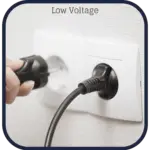What is a Power Inverter?
A power inverter is an electronic device that is used to convert direct current (DC) to alternating current (AC) with an aim to supply power to AC devices such as laptops, smartphones, televisions, and home appliances that rely on AC. The inverter is designed to handle different power ratings depending on the device that it is intended to power. In other words, a power inverter is a device that changes the voltage of DC power into AC power, allowing you to use your electronic devices wherever you are.
Examples of Power Inverter Applications
A power inverter is a versatile device that finds its application in various settings such as homes, cars, boats, and RVs. In a car, the inverter is used to convert DC power from the car battery to AC power that can be used to charge laptops or run a TV. In homes, power inverters are used as backup power sources during power outages. Boats and RVs use power inverters to supply electricity to their onboard electronics. Furthermore, solar panels, wind turbines, and batteries are some of the renewable energy sources that rely on power inverters to supply usable AC power.
How Does a Power Inverter Work?
A power inverter works by converting DC voltage to AC voltage using electronic circuits that rely on capacitors, transformers, and other electronic components. The electronic circuitry takes the DC input and processes it through a system that generates an AC output that is suitable for the device that you wish to power. The output voltage can be adjusted according to the device that the inverter is intended to power. For instance, a laptop requires a lower voltage than a refrigerator, which requires more power to run.
Advantages and Disadvantages of Power Inverters
The main advantage of a power inverter is the ability to convert DC power into AC power, making it possible to use electronic devices that run on AC power in settings where only DC power is available. Power inverters are also relatively easy to use and can be installed in a range of settings. However, one major disadvantage of power inverters is the potential for power loss during the conversion process. The conversion process can also generate heat, which can damage the inverter or the device being powered. Additionally, inverters can be costly and require regular maintenance to ensure they work efficiently.
In conclusion, power inverters are an essential component in today’s world of electronics. They offer a convenient and cost-effective way of converting DC power to AC power, enabling the use of electronic devices in a range of settings. Nonetheless, it’s essential to consider the power ratings of the device that you intend to power, as different devices require different power levels. Additionally, it’s necessary to ensure that the inverter is installed and maintained correctly to ensure its longevity and efficient performance.



